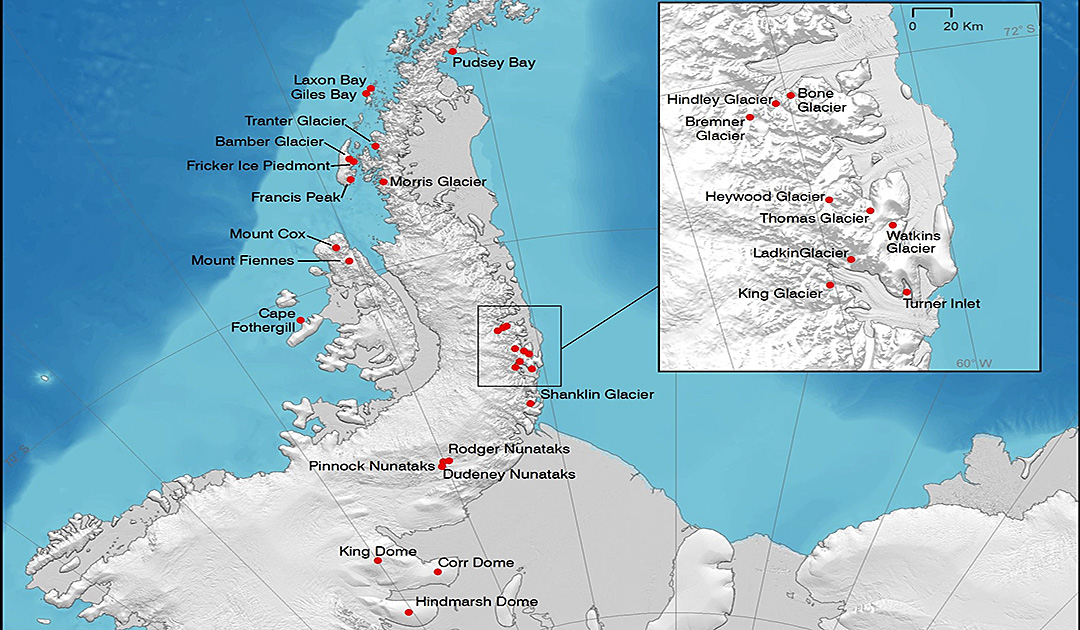
The year 2020 marked the 200th anniversary of the discovery of the Antarctic continent, following the discovery of the South Shetland Islands in 1819. The Government of the British Antarctic Territory has specifically asked the UK Committee for Antarctic Place Names last year to consider names to honour scientists, explorers, logisticians and others who have made a significant contribution to Britain’s scientific and exploratory work in Antarctica.

In a press release, the British Antarctic Survey announced on December 3, 2020 that 28 new place names will come into use in the UK Antarctic region. “Antarctic place-names honour those who have made an exceptional contribution to furthering the understanding, protection and management of Antarctica over the last fifty years, and whose achievements warrant highlighting alongside those of the early explorers,” BAS writes. Many of those honored are or were polar scientists, including some from the British Antarctic Survey, whose names are inscribed on the map of the continent.

In the naming process, care is taken by the British Committee for Antarctic Place Names when naming places in the British Antarctic Territory to ensure that these names are created according to internationally agreed rules. The purpose of the designation is to ensure that geographical features can be identified clearly . Important are the generic terms that give a clear description of the place, followed by a specific name related to historical, scientific or cultural aspects of Antarctica. These may include individuals “who have made a significant and sustained contribution to Antarctic science, or other notable service relating to Antarctica,” according to the press release.
The list of new names includes the head of BAS, Dame Jane Francis, and famous BBC Nature departement director Alastair Fothergill, who is known for many popular BBC nature documentaries. The full list of new place names can be found here…. (English).
New naming in 2012 led to fierce protests

A renaming of the region by the UK in 2012 had (once again) led to a dispute with Argentina, which claims the same part of the Antarctic Peninsula as its own territory.
The British ambassador to Argentina was then asked to explain to officials in Buenos Aires why part of Antarctica had been renamed in honour of the Queen. A note claimed the area was part of the Argentine Antarctic sector. At the time, the Argentine government had “emphatically rejected” Britain’s right to rename the territory.
Queen Elizabeth Land is nearly twice the size of Britain at 169,000 square miles, but was previously nameless at the time, according to the British Foreign Office. The United Kingdom first laid claim to the British Antarctic Territory in 1908. However, both Argentina and Chile insist that they had previously made claims to large areas of the same region.
Heiner Kubny, PolarJournal





